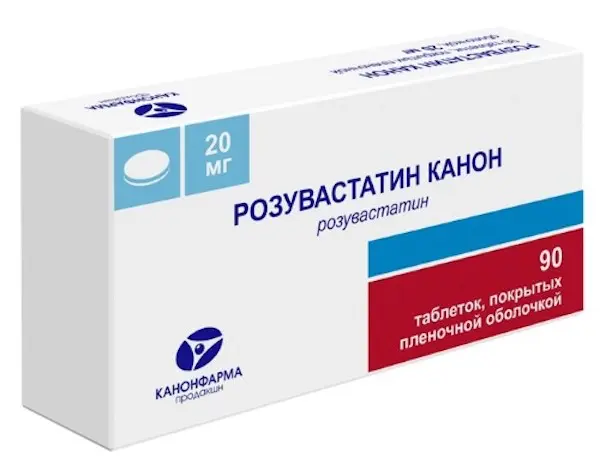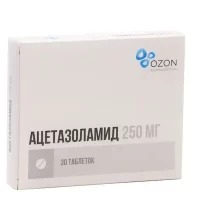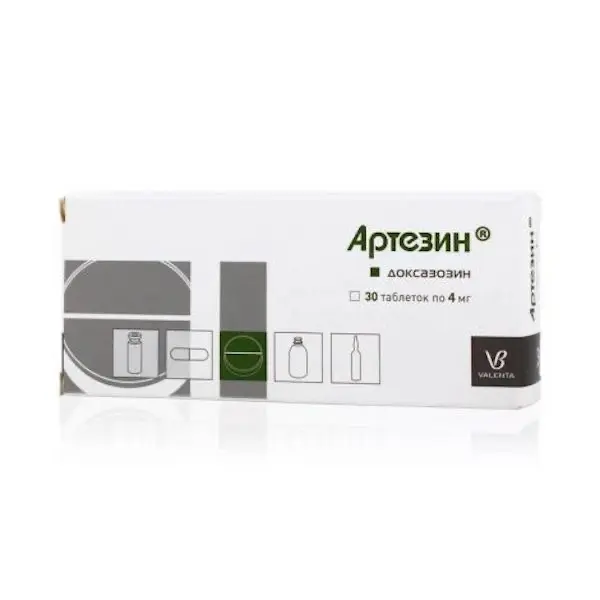Description
Rosuvastatin Pharmacodynamics
Mechanism of action
Rosuvastatin is a selective, competitive inhibitor of HMG-CoA reductase, an enzyme that converts 3-hydroxy-3-methylglutaryl coenzyme A to mevalonate, a precursor of cholesterol. The main target of rosuvastatin action is the liver, where the synthesis of cholesterol (cholesterol) and catabolism of low-density lipoproteins (LDL) are performed.
Rosuvastatin increases the number of “hepatic” LDL receptors on the cell surface, increasing capture and catabolism of LDL, which in turn leads to inhibition of synthesis of very low density lipoproteins (VLDL), thereby reducing the total amount of LDL and VLDL.
Pharmacodynamics
Rosuvastatin reduces the increased concentration of LDL cholesterol (LDL-C), total cholesterol, triglycerides (TG), increases the concentration of high-density lipoprotein cholesterol (HDL-C) and decreases the concentration of apolipoprotein B (ApoB), cholesterol-non-LDL, HDL-C, TG-LDL and increases the level of apolipoprotein A-I (ApoA-I), reduces the ratio of CH-LDL/HC-LDL, total CH / CH-LDL and CH-NLDL/HC-LDL and the ratio of apoB/ApoA-1. The possibility of reduction appears within one week after the start of therapy with Rosuvastatin, after 2 weeks of treatment it reaches 90% of the maximum possible effect. The maximum therapeutic effect is usually reached by the 4th week and maintained with regular use of the drug.
Clinical efficacy
Rosuvastatin is effective in adult patients with hypercholesterolemia with or without hypertriglyceridemia; regardless of race, sex or age, including patients with diabetes and familial hypercholesterolemia.
In 80% of patients with hypercholesterolemia of IIa and IIb types by Fredrickson classification (average baseline concentration of HC-LDL is about 4.8 mmol/l) against the background of the drug administration in dose 10 mg, HC-LDL concentration reaches values less than 3 mmol/l.
In patients with heterozygous familial hypercholesterolemia receiving rosuvastatin at a dose of 20-80 mg, positive dynamics of lipid profile parameters are observed. After titration to a daily dose of 40 mg (12 weeks of therapy), there was a 53% decrease in LDL-C concentration.
In patients with homozygous familial hypercholesterolemia, taking rosuvastatin at a dose of 20 mg and 40 mg, the average decrease in LDL-C concentration is 22%.
Additive effect is noted in combination with fenofibrate for triglyceride concentration and with nicotinic acid at lipid-lowering doses (more than 1 g/day) for HDL-C concentration.
Indications
– Primary Fredrickson hypercholesterolemia (type IIa, including familial heterozygous hypercholesterolemia) or mixed hypercholesterolemia (type IIb) as adjunct to diet, when diet and other non-pharmacological treatments (e.g. exercise, weight loss) are not sufficient.
– Familial homozygous hypercholesterolemia as an adjunct to diet and other lipid-lowering therapy (e.g., LDL-apheresis), or when such therapy is not sufficiently effective.
– Hypertriglyceridemia (type IV according to Fredrickson classification) as an adjunct to diet.
– To slow the progression of atherosclerosis as an adjunct to the diet in patients who are indicated for therapy to reduce total cholesterol and LDL-C concentrations.
– Primary prevention of major cardiovascular complications (stroke, infarction, arterial revascularization) in adult patients without clinical signs of coronary heart disease (CHD), but with an increased risk of its development (age over 50 years for men and over 60 years for women, increased concentration of C-reactive protein (? 2 mg/L) with at least one additional risk factor, such as arterial hypertension, low HDL-C, smoking, family history of early onset of CHD).
Contraindications
– Hypersensitivity to rosuvastatin or any of the drug components;
– liver disease in the active phase, including a persistent increase in serum transaminase activity and any increase in serum transaminase activity (more than 3 times the upper limit of normal);
– patients with hepatic insufficiency;
– severe renal impairment (CKG less than 30 ml/min);
– myopathy;
– concomitant use of cyclosporine;
– Children and adolescents under 18 years of age;
– in women: pregnancy, breastfeeding, lack of adequate contraceptive methods;
– patients predisposed to the development of myotoxic complications;
– lactose intolerance, lactase deficiency or glucose-galactose malabsorption (the drug contains lactose).
– Hypersensitivity to rosuvastatin or any of the drug components;
– liver disease in the active phase, including a persistent increase in serum transaminase activity and any increase in serum transaminase activity (more than 3 times the upper limit of normal);
– patients with hepatic insufficiency;
– severe renal impairment (CKG less than 30 ml/min);
– myopathy;
– concomitant use of cyclosporine;
– Children and adolescents under 18 years of age;
– in women: pregnancy, breastfeeding, lack of adequate contraceptive methods;
– patients predisposed to the development of myotoxic complications;
– lactose intolerance, lactase deficiency or glucose-galactose malabsorption (the drug contains lactose).
Dosage and administration
- Inside, do not chew or crush, swallow it whole with water. The drug may be administered at any time of the day regardless of the time of meals.
Before starting therapy with Rosuvastatin, the patient should start following a standard hypocholesterolemic diet and continue to follow it during treatment.
The dose of the drug should be adjusted individually depending on the goals of therapy and the therapeutic response to treatment, taking into account current recommendations for target lipid concentrations. - The recommended starting dose for patients starting to take the drug or for patients transferred from other HMG-CoA reductase inhibitors should be 5 or 10 mg of Rosuvastatin once daily. When choosing the initial dose, individual cholesterol concentrations should be guided and the possible risk of cardiovascular complications should be taken into account, and the potential risk of side effects should be assessed. If necessary, the dose may be increased to a larger one in 4 weeks.
- Due to the possible development of side effects when taking a dose of 40 mg, compared with lower doses of the drug, increasing the dose to 40 mg, after an additional dose above the recommended initial dose for 4 weeks of therapy, should only be undertaken in patients with severe hypercholesterolemia and with a high risk of cardiovascular complications (especially in patients with familial hypercholesterolemia) who have not achieved the desired therapy outcome with the 20 mg dose and who will be monitored by a specialist. Especially close monitoring of patients receiving the drug in a dose of 40 mg is recommended.
- Prescribing a 40 mg dose to patients who have not previously seen a physician is not recommended. After 2-4 weeks of therapy and/or if the dose of Rosuvastatin is increased, lipid metabolism should be monitored (if necessary, a dose adjustment is required).
- Elderly patients.
The initial recommended dose in patients aged over 70 years is 5 mg, otherwise there is no need for dose adjustment depending on age. - Patients with renal insufficiency
No dose adjustment is required in patients with mild to moderate renal insufficiency.
All doses of Rosuvastatin are contraindicated in patients with severe renal failure (CKR less than 30 ml/min) (see section “Contraindications”). - The use of the drug in a dose of 40 mg is contraindicated in patients with moderate renal impairment (CK lower than 60 ml/min). In patients with moderate renal impairment (CKD less than 60 ml/min) a starting dose of 5 mg is recommended.
- Patients with hepatic impairment.
The drug Rosuvastatin is contraindicated in patients with liver disease in the active phase. - Special populations
- Ethnic groups.
When studying pharmacokinetic parameters of rosuvastatin in patients belonging to different ethnic groups, an increase in systemic concentration of rosuvastatin among Japanese and Chinese was noted. This fact should be considered when prescribing rosuvastatin to these groups of patients. When prescribing doses of 10 and 20 mg, the recommended starting dose for mongoloid patients is 5 mg. A dose of 40 mg is contraindicated in mongoloid patients (see Contraindications). - Patients with predisposition to myopathy
Administration of the drug in dose of 40 mg is contraindicated in patients with factors that may indicate susceptibility to myopathy (see section “Contraindications”). When prescribing doses of 10 and 20 mg, the recommended starting dose for this group of patients is 5 mg. - Genetic polymorphism
Carriers of SLCOIBI (OATP1B1) p.521CC and ABCG2 (BCRP) p.421AA had increased exposure (AUC) to rosuvastatin compared to carriers of SLCOIBI p.52ITT and ABCG2 p.421CC genotypes. For c.521CC or c.421AA genotype carriers, the recommended maximum dose of rosuvastatin is 20 mg once daily. - Concomitant therapy
Rosuvastatin binds to various transport proteins (in particular, to OATP1B1 and BCRP). When concomitant use of Rosuvastatin with drugs (such as cyclosporine, some HIV protease inhibitors, including the combination of ritonavir with atazanavir, lopinavir and/or tipranavir) that increase the plasma concentration of rosuvastatin through interaction with transport proteins, the risk of myopathy (including rhabdomyolysis) may be increased. Read the instructions for use of these drugs before prescribing them simultaneously with the drug Rosuvastatin. In such cases, the possibility of alternative therapy or temporary discontinuation of Rosuvastatin should be assessed. If the use of the above drugs is necessary, the benefit-risk ratio of concomitant therapy with Rosuvastatin should be assessed and the possibility of reducing its dose should be considered.





